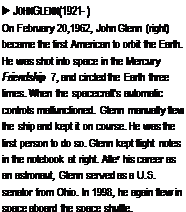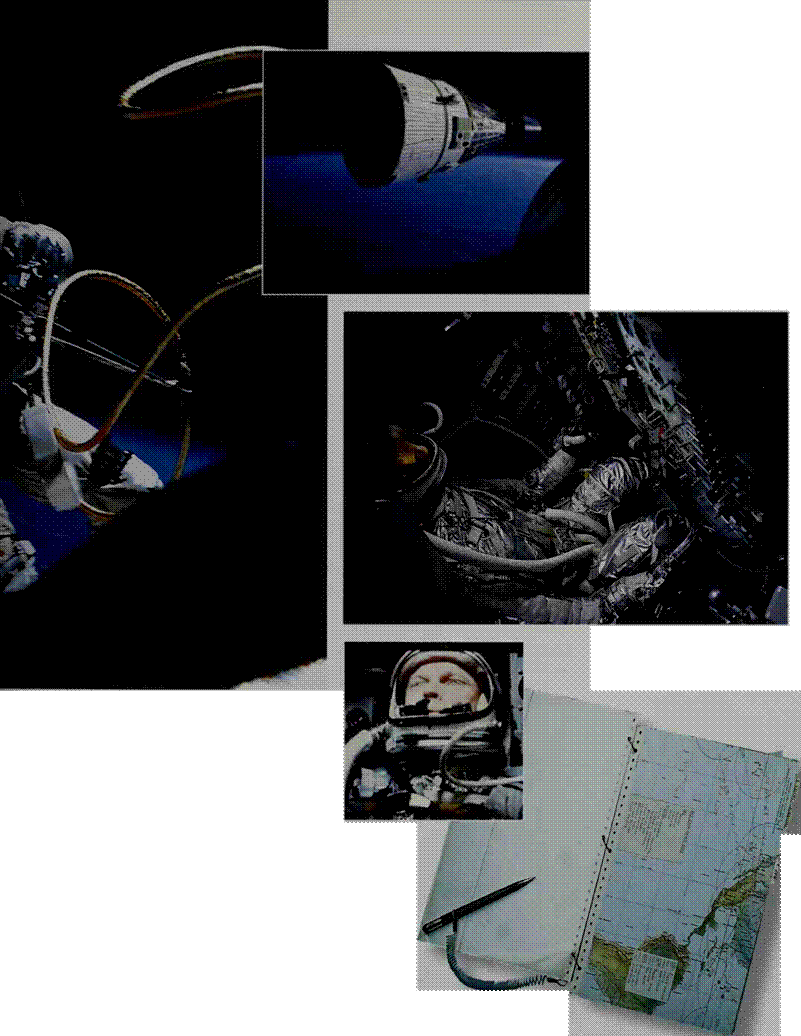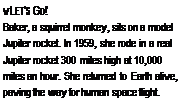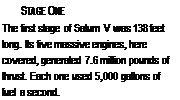Mercury and Gemini
BY the 1960s, the United States was competing with the Soviet Union lor supremacy in a “Space Race.” Both nations launched rockets j carrying animals — dogs and monkeys —to test space flight on living things.
On April 12, 1961, the Soviet Union moved ahead in the race by putting the first man into orbit. He was cosmonaut, or "sailor of the cosmos,” Yuri Gagarin. The United States responded with its piloted Alercury spacecraft. The first one, on May 5, 1961, carried astronaut, or "star sailor,” Alan Shepard on a 15-minute flight that did not go into orbit. On February 20, 1962, Mercury’s Friencbhip 7 blasted into orbit wi th John Glenn.
The next step was Gemini, a two-person spacecraft program. Gemini astronauts practiced docking with other spacecraft and other skills that would be needed lor a mission to the. Moon. Now the race to the Moon was on!
 |

< Gehihi Firsts
A hundred miles above the Earth,
Gemini 4 astronaut Ed White takes the first U. S. spacewalk June 3,1965. It lasted 23 minutes. On December 15,1965, Gemini 6 edges to within a fpw feet of Gemini 7 in the first rendezvous of piloted U. S.spacecraft.
T Snug fu
Inside the tiny cabin of Freedom 7, Mercury astronaut Alan Shepard lies in a couch surrounded by instruments. The first U. S. piloted spacecraft, it was just big enough for one person to squeeze into.




 HREE, two, one—we have liftoff!” With these words, rocket engines explode with a deafening roar, spewing out columns of fire and gas. Smoke billows into the sky and the ground shakes as the mighty engines thrust the rocket into the sky and send it hurtling toward space.
HREE, two, one—we have liftoff!” With these words, rocket engines explode with a deafening roar, spewing out columns of fire and gas. Smoke billows into the sky and the ground shakes as the mighty engines thrust the rocket into the sky and send it hurtling toward space.
On these pages you can see rockets of
(many sizes and shapes developed during the
Space Age. They were built for many purposes. Some were used as missiles, or weapons.
Others were used as launching vehicles to send communications or weather satellites into space. And some have launched spacecraft with animals and human beings into space.
The Saturn V rockets were the largest, most powerful ever built. They were used to launch the Apollo missions to the Moon. Each Saturn V rocket had three stages. Stacked all together, the rocket stood nearly as tall as a 40 story building! Il weighed over 3,000 tons, most of that nearly 2,950 tons ol rocket fuel. [4]
![]()
|
|
|
|
|
|

|
|










